Comets, Venus Kisses the Seventh Planet, Evening Moon Spells LOVE, Smashes a Scorpion Claw and Darts Over Double Stars!
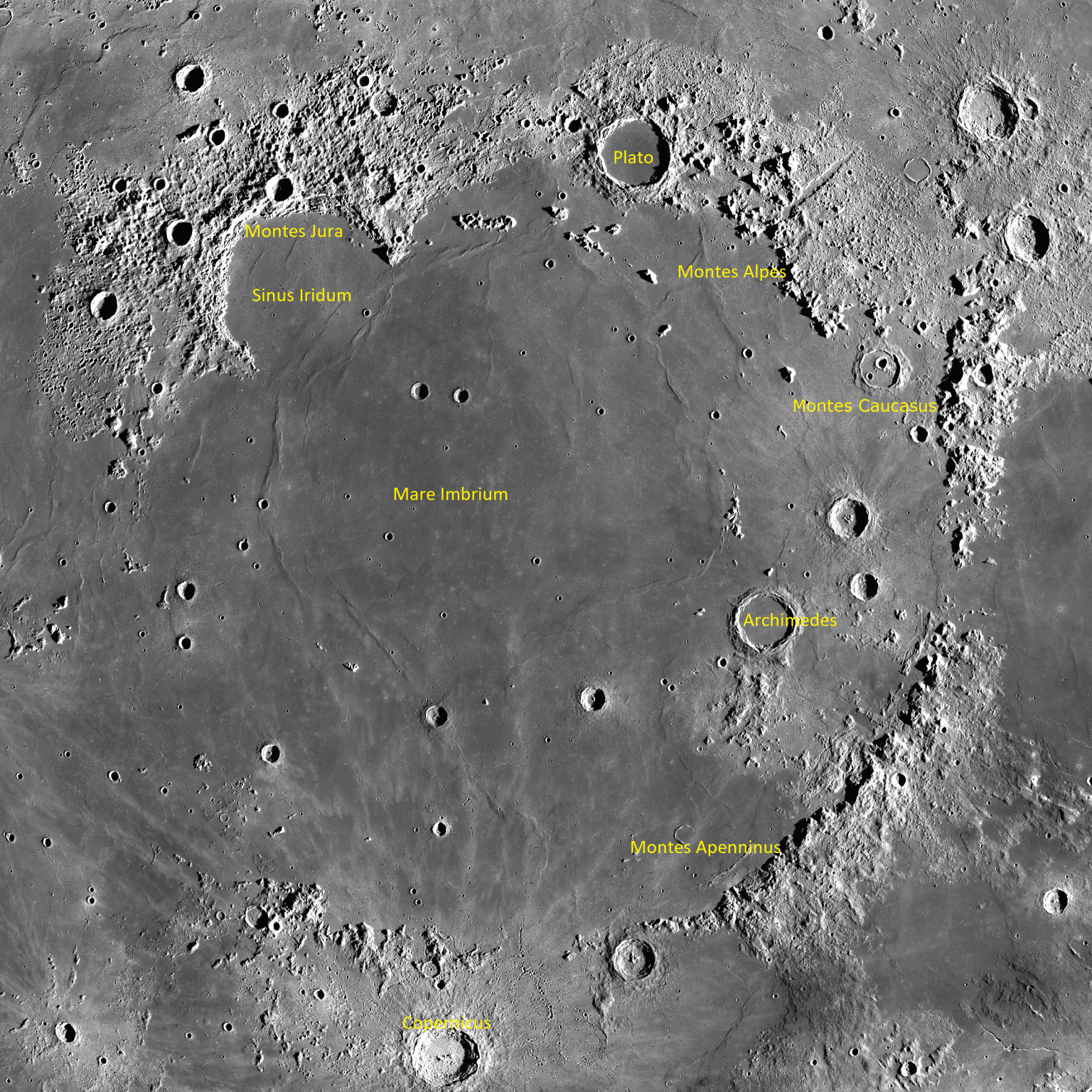
A high resolution image of the moon’s Imbrium Basin, captured by the Lunar Reconnaissance Orbiter. From Monday to Friday this week, the lunar terminator will march across this huge feature in the moon’s northern hemisphere, showing off its best aspects.
Hello, June Stargazers!
Here are your Astronomy Skylights for the week of June 5th, 2022 by Chris Vaughan. Feel free to pass this along to your friends and send me your comments, questions, and suggested topics. You can also follow me on Twitter as @astrogeoguy! Unless otherwise noted, all times are expressed in Eastern Time. To subscribe to these emails please click this MailChimp link.
If you’d like me to bring my Digital Starlab portable inflatable planetarium to your school or other daytime or evening event, or deliver a session online, contact me through AstroGeo.ca, and we’ll tour the Universe, or the Earth’s interior, together! My terrific new book with John A. Read entitled 110 Things to See With a Telescope is a guide to viewing the deep sky objects in the Messier List – for both beginners and seasoned astronomers. DM me to order a signed copy!
This week, the moon will wax fuller and brighten in the afternoon and evening sky worldwide. It will occult the bright double star Dschubba (and others) while it slides east. In the eastern pre-dawn sky, Mars and Jupiter will separate, Venus will kiss Uranus, and Mercury will join the parade to make all five bright planets visible, in order! And two evening comets are available for telescope owners. Read on for your Skylights!
The Moon
This is the best week of the lunar month worldwide for viewing our natural satellite. To begin the week the moon will be crossing the southern sky during the afternoon hours and then shining prettily in the western evening sky after sunset. On each subsequent day the moon will rise 65 minutes later and linger for an extra 80 minutes into evening. The moon will wax fuller because it will be steadily increasing its angle from the sun.
The zone on the moon positioned just to the right (lunar east) of the pole-to-pole terminator boundary line will be bathed in near-horizontal sunlight. Such low-angled illumination leaves crater floors a deep black while their rims gleam. The minor bumps and wrinkle ridges on apparently featureless mare regions are revealed. In fact, a great many lunar features can only be appreciated just after the terminator slides past them. Watch for tall peaks within the dark hemisphere of the moon that are catching the sun before the terminator reaches them. The spectacular lunar vistas vary hour by hour and day by day – so keep your binoculars or backyard telescope at the ready!
Tonight (Sunday, June 5 ) the moon’s 34%-illuminated crescent will shine less than a finger’s width to the lower right (or celestial west) of the star Al Jabhah (or Eta Leonis), which marks the chest of Leo (the Lion). You can use binoculars to watch the moon slide just below that star before they set together around 1 am local time. Folks viewing from the Caribbean and farther south can see the moon pass in front of (or occult) Al Jabhah starting before 10:30 pm Central Time! The timing depends on your latitude. For Mexico City, the star will be covered by the dark leading edge of the moon at 10:38 pm CDT. It will emerge from behind the bright opposite side of the moon at 11:37 pm. I posted a diagram here.
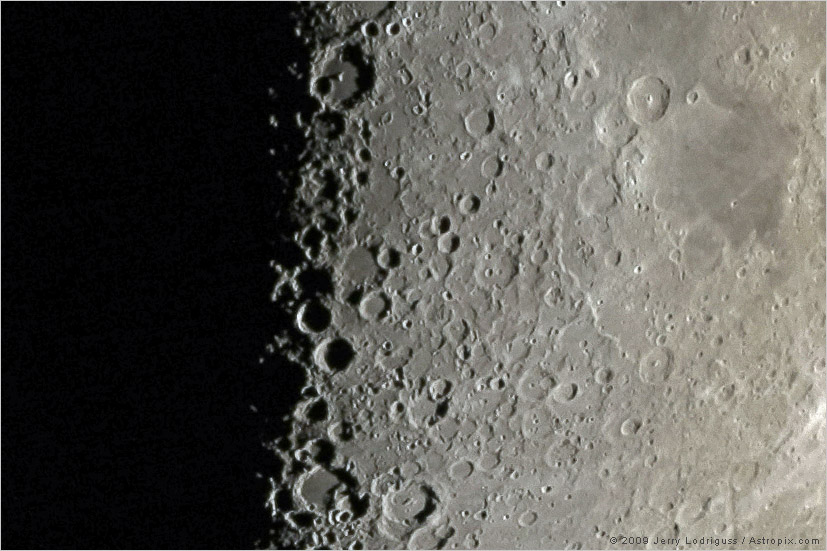
Several times a year, for a few hours near its first quarter phase, a feature on the moon called the Lunar X becomes visible in powerful, tripod-mounted binoculars and any size of backyard telescope. When the rims of the craters Purbach, la Caille, and Blanchinus are illuminated from a particular angle by the sun, they form a small, but very obvious X-shape.
The phenomenon is an example of pareidolia – the tendency of the human mind to see familiar objects when looking at random patterns. The Lunar X is located near the terminator, about one third of the way up from the southern pole of the moon (at lunar coordinates 2° East, 24° South). A prominent round crater named Werner sits to its lower right (or lunar southeast).
On Monday, June 6 the ‘X’ is predicted to start developing by about 5 pm EDT (or 2 pm PDT and 21:00 Greenwich Mean Time). When the sun’s light first touches the crater rims the X will be indistinct. The shape will intensify to a peak at around 6:30 pm EDT (or 3:30 pm PDT and 22:30 GMT), and then gradually fade out over the next hour or two.
Unfortunately, this Lunar X’s peak is during daylight for observers in the eastern Americas. But you can always safely observe the moon in binoculars or a telescope during daytime, as long as you take care to avoid aiming them at the sun. Viewing the moon through polarized glasses (especially 3D glasses from the movies) in daytime will increase the image contrast. This Lunar X will be visible anywhere on Earth where the moon is shining, especially in a dark sky, between approximately 21:00 and 00:00 GMT. Observers in Europe and western Africa can see the features while the moon is shining in a dark sky.
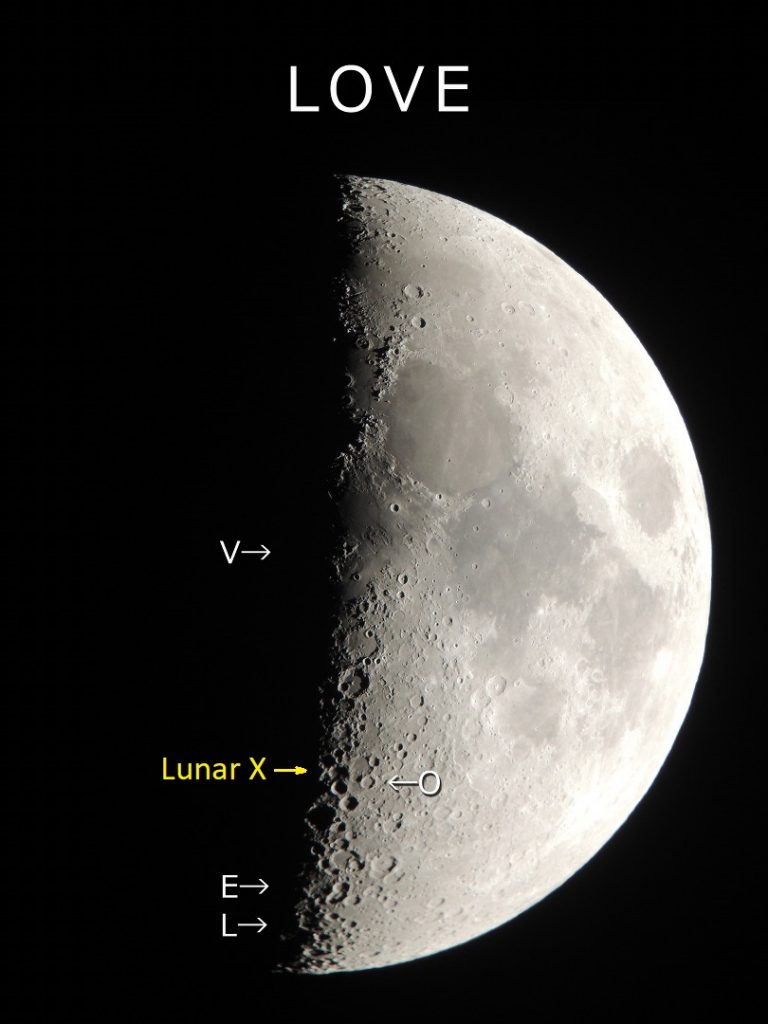
During a Lunar X event, you can also look for the Lunar V and the Lunar L. The “V” is produced by combining the small crater named Ukert with some ridges to the east and west of it. It is located a short distance above the moon’s equator at lunar coordinates 1.5° East, 8° North. For a further challenge, see if you can see the letter “L” down near the moon’s southern pole. Its position is to the southwest of three prominent and adjoining craters named Licetus, Cuvier, and Heraclitus which, in combination, resemble Mickey Mouse’s head and ears. In some photographs, a backwards “E” shows above the “L”, allowing you to spell out “L-O-V-E” by using any round crater! I posted a photo of the “letters” here.
While still traversing the stars of Leo, the moon will complete the first quarter of its orbit around Earth, measuring from the previous new moon, on Tuesday at 10:48 am EDT (or 7:48 am PDT and 14:48 GMT). At first quarter, the terminator becomes a straight line running north-south on the moon. The terminator will become more and more curved as the moon waxes gibbous (i.e., more than 50%-illuminated) after Tuesday. That’s how ancient astronomers knew that moon was a sphere!
If you can spot the moon low in the eastern sky on Tuesday afternoon, you’ll notice that the terminator is tilted almost sideways, with top (lunar north) to the left. When the moon passes above the southern point on the horizon around 9 pm local time, the terminator will be up-down. During the following hours, the terminator will tip to the right. That angle change is not the moon flipping around. It’s caused by us Earthlings viewing the moon from the surface of a revolving sphere. Constellations and planets, even the sun, flip over as they cross the sky from east to west.
From Late Tuesday night through Friday, the waxing gibbous moon will travel through Virgo (the Maiden). Her brightest star Spica will be sparkling a few finger widths below the bright moon on Thursday night.
On Saturday, the nearly full moon will land in Libra (the Scales). Once the sky darkens in the Americas, look for the pretty double star named Zubenelgenubi poised two finger widths to the moon’s lower left (or celestial southeast). That star’s fun name derives from the Arabic expression ّالزُبَانَى الجَنُوبِي al-zubānā al-janūbiyy “the southern claw” because Libra used to be part of next-door Scorpius (the Scorpion). Hours earlier, observers from Northern Madagascar to Sierra Leone can watch the moon occult Zubenelgenubi’s two stars, one at a time in rapid succession, starting around 11:05 pm or 23:05 GMT.
The moon will put on a repeat performance on Sunday night, June 12, when observers in the northeastern USA and eastern Canada can see the nearly full moon occult the bright double star Dschubba or Delta Scorpii in binoculars and backyard telescopes! That star is the central claw star of the scorpion. Exact timings will vary by location, so use Stellarium or another astronomy app to determine the precise times where you are. In Toronto, the leading, dark edge of the moon will cover the two stars at 10:14:40 pm EDT. If you view that ingress event in a backyard telescope, Dschubba’s two stars will wink out 8 seconds apart! They will emerge from behind the moon’s bright limb at 10:55:26 pm EDT, about 5 seconds apart. Try to start watching a few minutes ahead of each time noted.
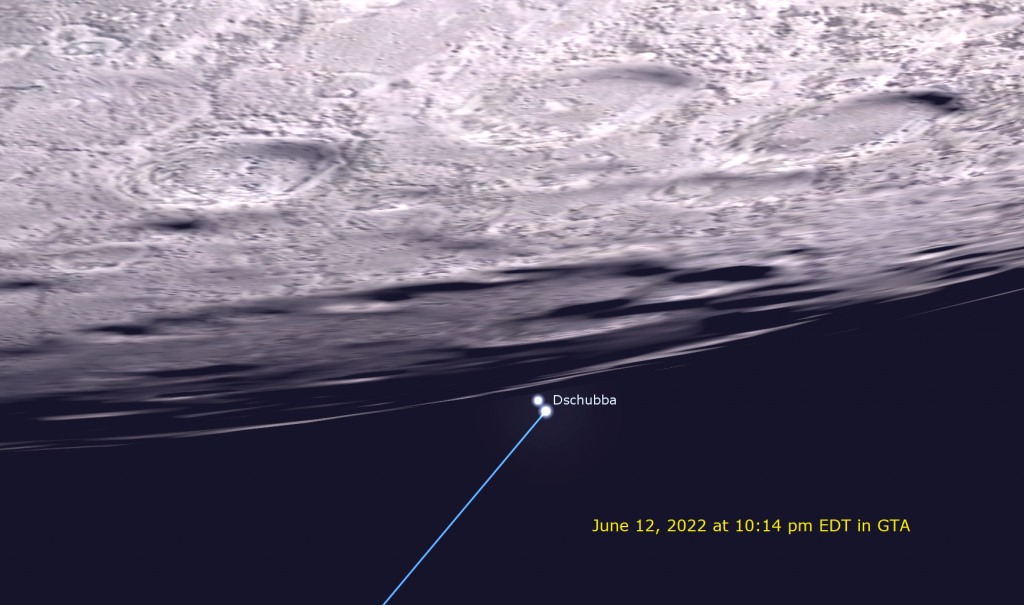
The Planets
Night owls might spot a bright, yellowish dot rising over the east-southeastern horizon during the wee hours of the night from this week onwards. That will be Saturn – the grand marshal of the 2022 planets parade! This week the ringed planet will rise among the faint stars of eastern Capricornus (the Sea-Goat) shortly after 12:30 am local time. Saturn will remain in view as it climbs higher and shifts south until the dawn twilight hides it. Any size of telescope will show you Saturn’s globe extending above and peeking out below its rings, and up to a handful of its moons. Today (Sunday) Saturn’s eastward prograde motion will slow to a stop as it prepares to enter a westward retrograde loop that will last until late October. Retrograde loops occur when Earth, on a faster orbit closer to the sun, passes more distant planets “on the inside track”, making them appear to move backwards across the stars.

At around 3 am local time, the planets Jupiter and Mars will join the parade. Reddish Mars will increase its spacing to the lower left of much brighter Jupiter every morning, but the duo will share the view in binoculars until about mid-week. In a telescope, Mars will shine with a tiny, 87%-illuminated disk. Jupiter’s much larger ball, flanked by its row of four Galilean moons, will feature dark bands running parallel to its equator, the Great Red Spot on Tuesday, Thursday, and next Sunday morning, and the small back shadow of Io’s disk on Monday morning. Europa’s shadow will cross on Friday morning.
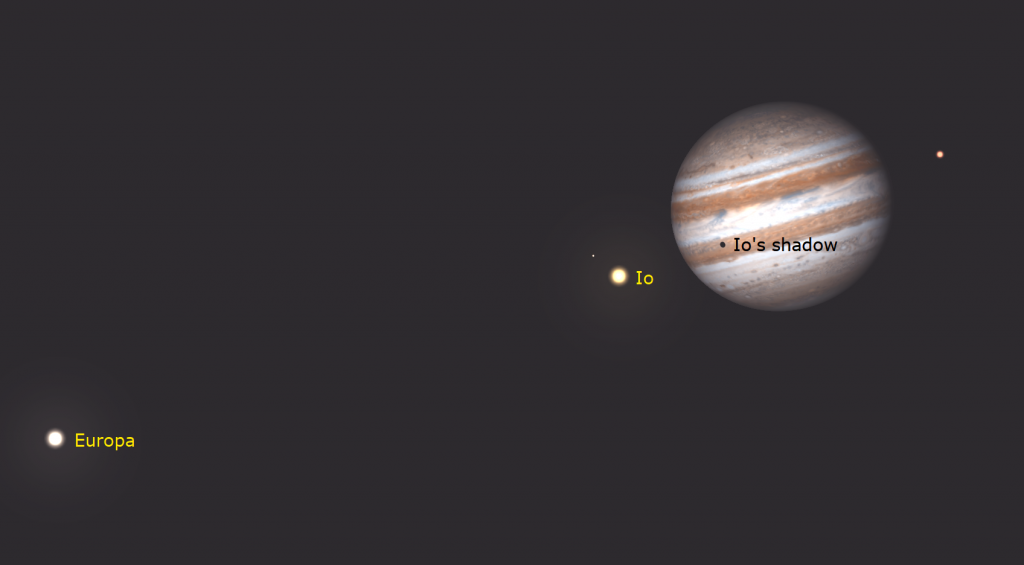
Venus, the brightest planet of them all, will gleam above the treetops in the eastern sky between 4:30 am and sunrise. Venus will exhibit a waxing football-shape in a telescope or in good binoculars. Mercury will rise more than a fist’s diameter to the lower left (or celestial east) of Venus by 5 am, but the speedy planet won’t be easily seen until about Friday onwards.
Mercury’s position at the end of the planet parade will mean that five bright planets will be shining together in the eastern pre-dawn sky, arranged in order of their distance from the sun! That arrangement will last for the rest of June. Mercury’s position well below (or celestial south of) the slanted morning ecliptic will prevent observers at mid-northern latitudes from seeing the speedy planet very easily until it swings farther from the sun. Observers in the tropics and farther south can spot the planet already.
But wait – there’s more there than meets the eye! The main belt asteroid named (4) Vesta will be traveling less than a fist’s width to the lower left (or about 9° to the celestial southeast) of Saturn – but you’ll need good binoculars or a backyard telescope to see its magnitude 7.1 speck. Faint, blue Neptune will be lurking almost a fist’s width to Jupiter’s upper right (or 9° to the celestial west). The magnitude 5.85 dot of Uranus will rise a palm’s width to Venus’ lower left around 4 am local time. Its blue-green dot will become more visible over the coming weeks.

On Saturday morning, the faster motion of Venus will carry it past Uranus. The two planets will be close enough to share the view in the eyepiece of a backyard telescope, but Venus will outshine Uranus by a factor of 8000 times, making the fainter planet difficult to see against the glare. On Saturday, Venus will be positioned a thumb’s width below (or 1.7 degrees to the celestial south of) Uranus. They’ll be nearly as close on Sunday morning, with Venus shifting left (east) by one degree. Observers at southerly latitudes, where all the planets will appear higher in a darker sky, will get the best view of the conjunction.
Mars, Jupiter, Uranus, and Neptune will each start a retrograde period in the coming weeks and months. The next most westerly planet, Neptune, will enter retrograde on June 28. While planets are in retrograde, Earth is closer to them, giving us our best views in binoculars and telescopes while they look larger and brighter. As a bonus, they start rising in late evening. Saturn will rise before midnight from the third week of June onward – kicking off the 2022 evening planets season!
Turn all optics away from the east before sunrise, please!
Faint Comets Alert
Two comets are currently observable in backyard telescopes in the evening sky, especially if you view them in non-light-polluted skies. In smaller telescopes, comets resemble fuzzy grey stars. In larger telescopes, you might see a hint of green colour and a hint of its tail pointed away from the sun.
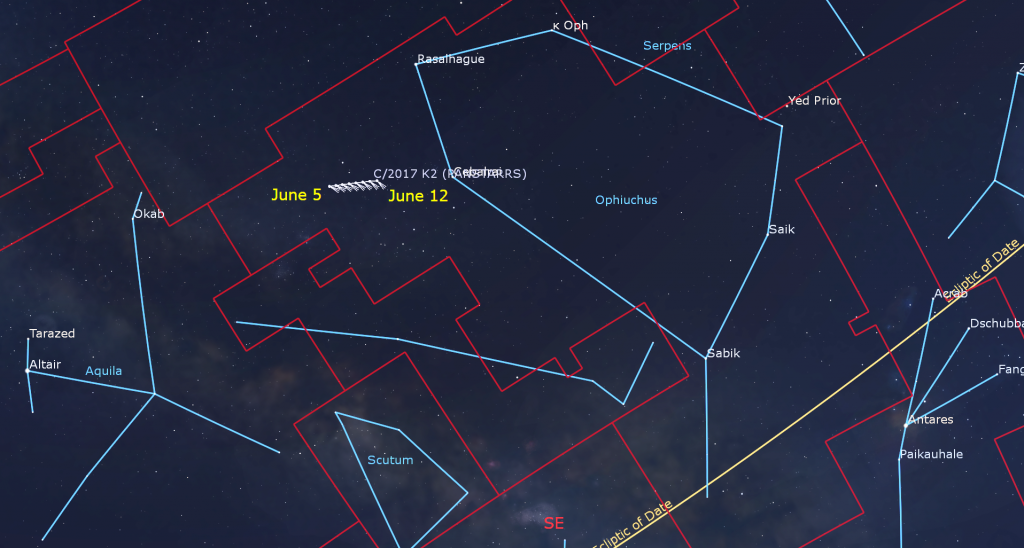
The brighter of the two comets, named C/2017 K2 (PanSTARRS), is travelling left to right (or celestial southwestward) through northeastern Ophiuchus (the Serpent-Bearer). Look for it about one-third of the way up the southeastern evening sky. The comet is visible all night long, but it will be most easily seen while it is highest in the sky, during the wee hours. It is currently around magnitude 9.5 and still brightening. This week the comet will be located about a palm’s width to the left (or 5° to 8° to the celestial northeast) of the bright star Cebalrai. It will pass the southern edge of open star cluster named IC 4665 (the Summer Beehive Cluster) on June 19-20 and close to the bright star Cebalrai on June 21-22.
A more challenging comet named C/2021 P4 (ATLAS) is travelling right to left (or celestial southeastward) below the constellation of Lynx, which reclines low in the northwestern sky until about 1 am local time. This one is currently at a faint magnitude 11 and brightening. Try to view it as soon as the sky darkens fully, when it will be located below the Big Dipper’s bowl. There aren’t really any “landmarks” to help you find it, but it will pass just below (south of) the medium-bright star named 21 Lyncis on Saturday night. It will fly just above NGC 2683 (the UFO Galaxy) on July 5.

Public Astro-Themed Events
Every Monday evening, York University’s Allan I. Carswell Observatory runs an online star party – broadcasting views from four telescopes/cameras, answering viewer questions, and taking requests! Details are here. They host in-person viewing on the first clear Wednesday night each month. Other Wednesdays they stream views online via the observatory YouTube channel. Details are here.
My free, family-friendly Insider’s Guide to the Galaxy webcasts with Samantha Jewett of RASC National returns on Tuesday, June 7 at 3:30 pm EDT, when we’ll celebrate our Globular Cluster Spectacular and hand out the Globie Awards for the best ones to look at! Plus, we’ll continue with our Messier Objects observing certificate program and share some galaxy-viewing tips. You can find more details and the schedule of future sessions here.
On Tuesday, June 7 from 7 to 8 pm EDT, the Dunlap Institute at University of Toronto will stream their popular Astro Trivia Night. The live, free event will feature lots of fun and prizes. Details are here.
Weather permitting, on Wednesday, June 8 from 9 to 10:30 pm, astronomers from RASC – Mississauga will hold a public star party at the Riverwood Conservancy, 4300 Riverwood Park Lane, Mississauga. Details and the ticket registration link are here.
RASC’s Public sessions at the David Dunlap Observatory may not be running at the moment, but they are pleased to offer some virtual experiences instead in partnership with Richmond Hill. The modest fee supports RASC’s education and public outreach efforts at DDO. Only one registration per household is required. Prior to the start of the program, registrants will be emailed the virtual program link.
On Saturday night, June 11 from 9 to 10:30 pm EDT, the DDO Astronomy Speakers Night program will feature Dr. Jess McIver, assistant professor in the Department of Physics and Astronomy at the University of British Columbia, and the Canada Research Chair in Gravitational Wave Astrophysics. She’ll speak on What Can We Learn from Gravitational Waves? There will also be a virtual tour of the DDO and live-streamed views from the DDO’s 74-Inch telescope (weather permitting). The deadline to register for this program is Wednesday June 8, 2022 at 3 pm. More information is here and the registration link is here.
On Sunday afternoon, June 12 from 11 am to noon EDT, join me for Ask an Astronomer. During the family-friendly session, I’ll answer your questions about the universe and review what’s up nowadays. The deadline to register for this program is Wednesday, June 8, 2022 at 3 pm. More information is here and the registration link is here.
Don’t forget to take advantage of the astronomy-themed YouTube videos posted by RASC Toronto Centre and RASC Canada.
Space Station Flyovers
The ISS (or International Space Station) will not be visible gliding silently over the GTA this week. It will return before sunrise on June 26.
Keep looking up, and enjoy the sky when you do. I love questions and requests. Send me some!